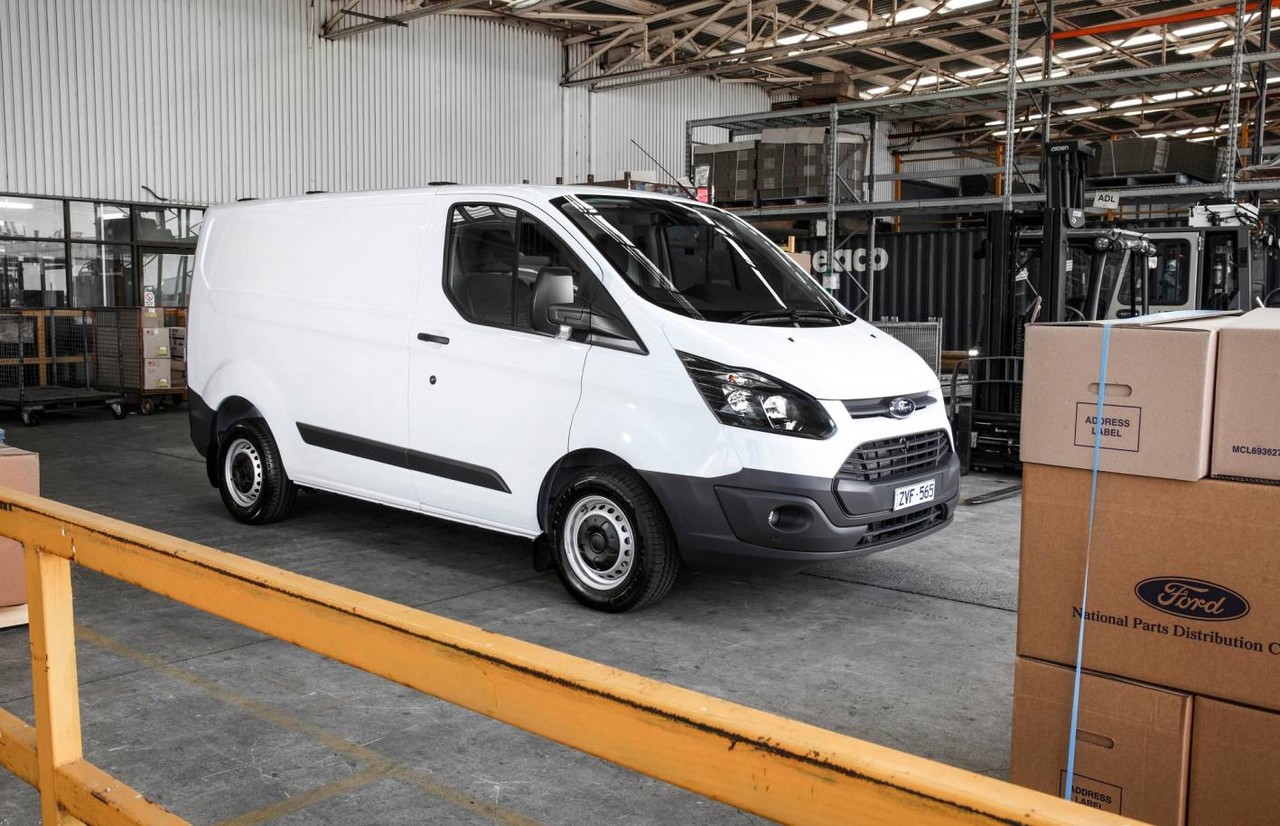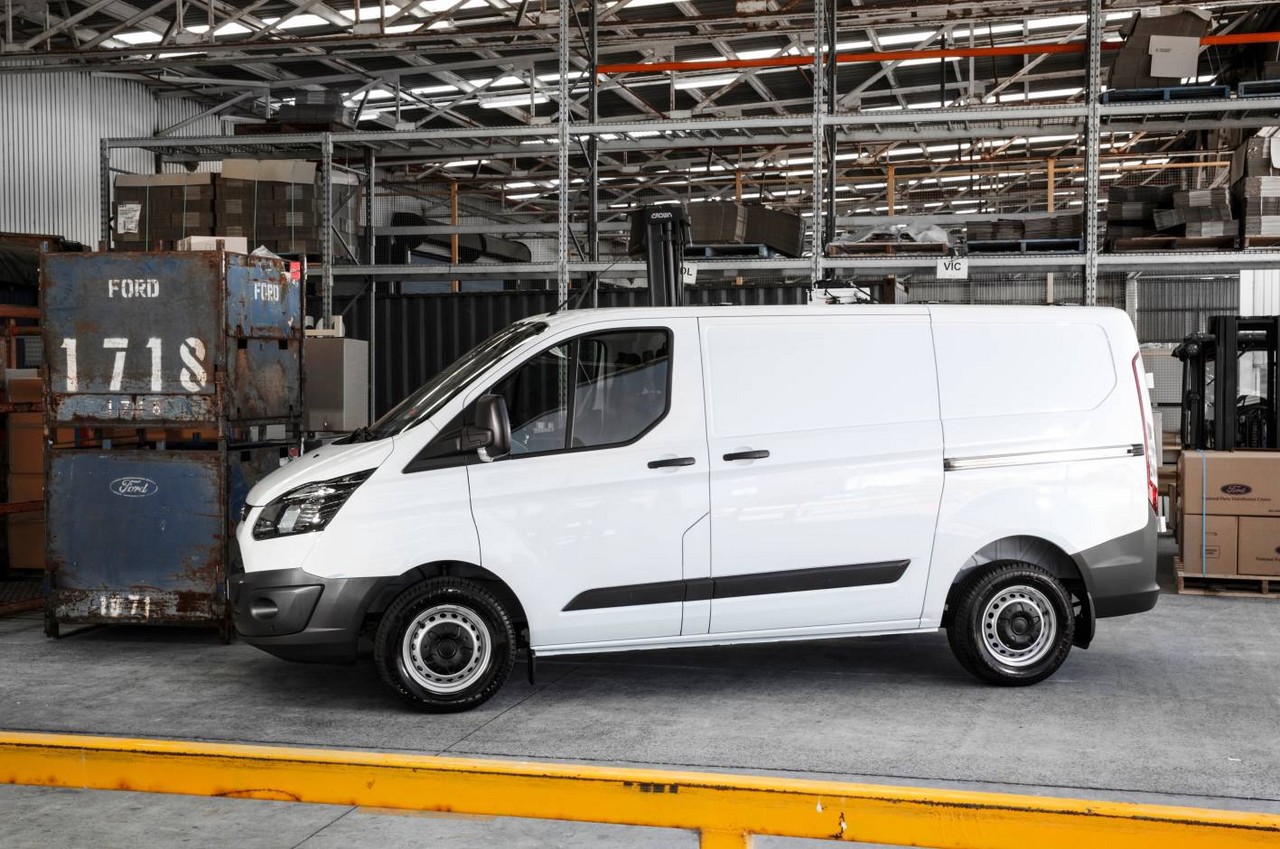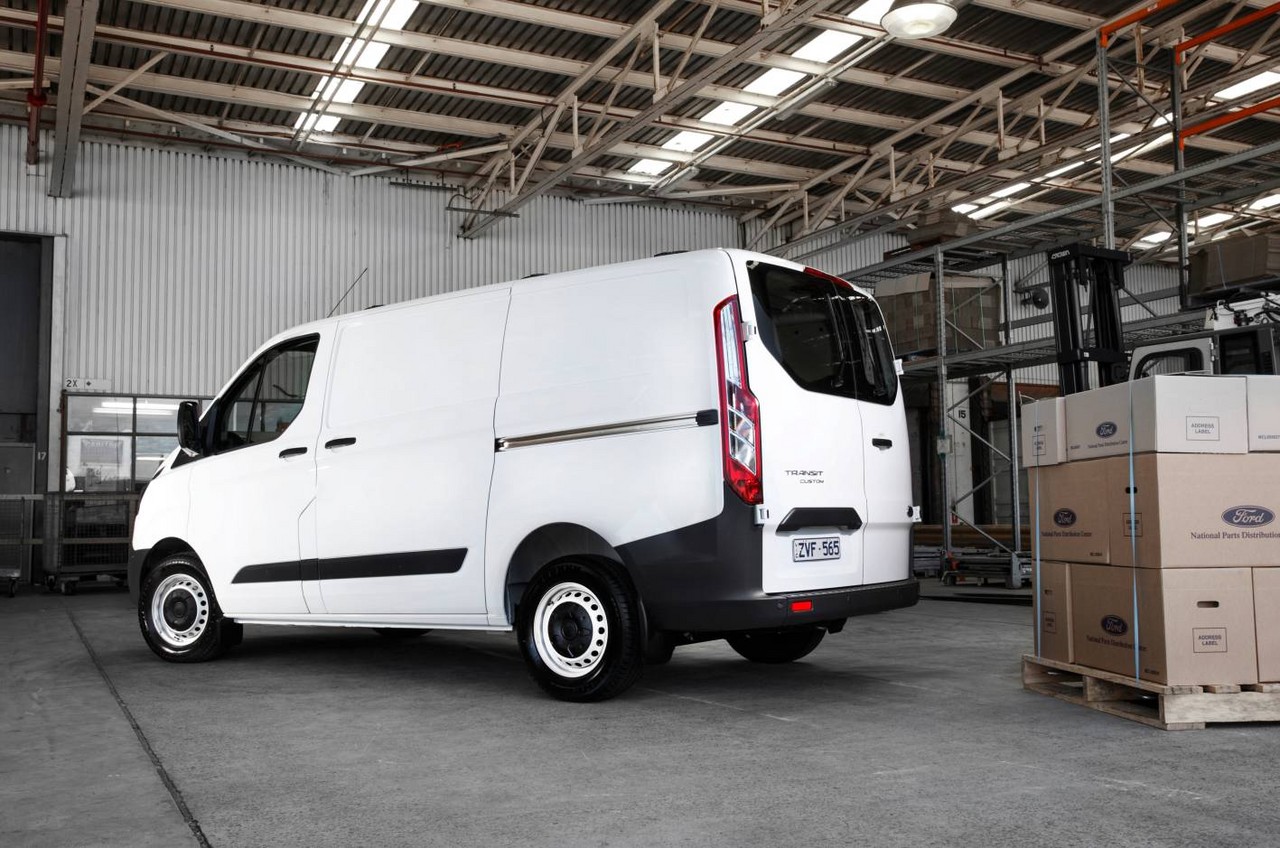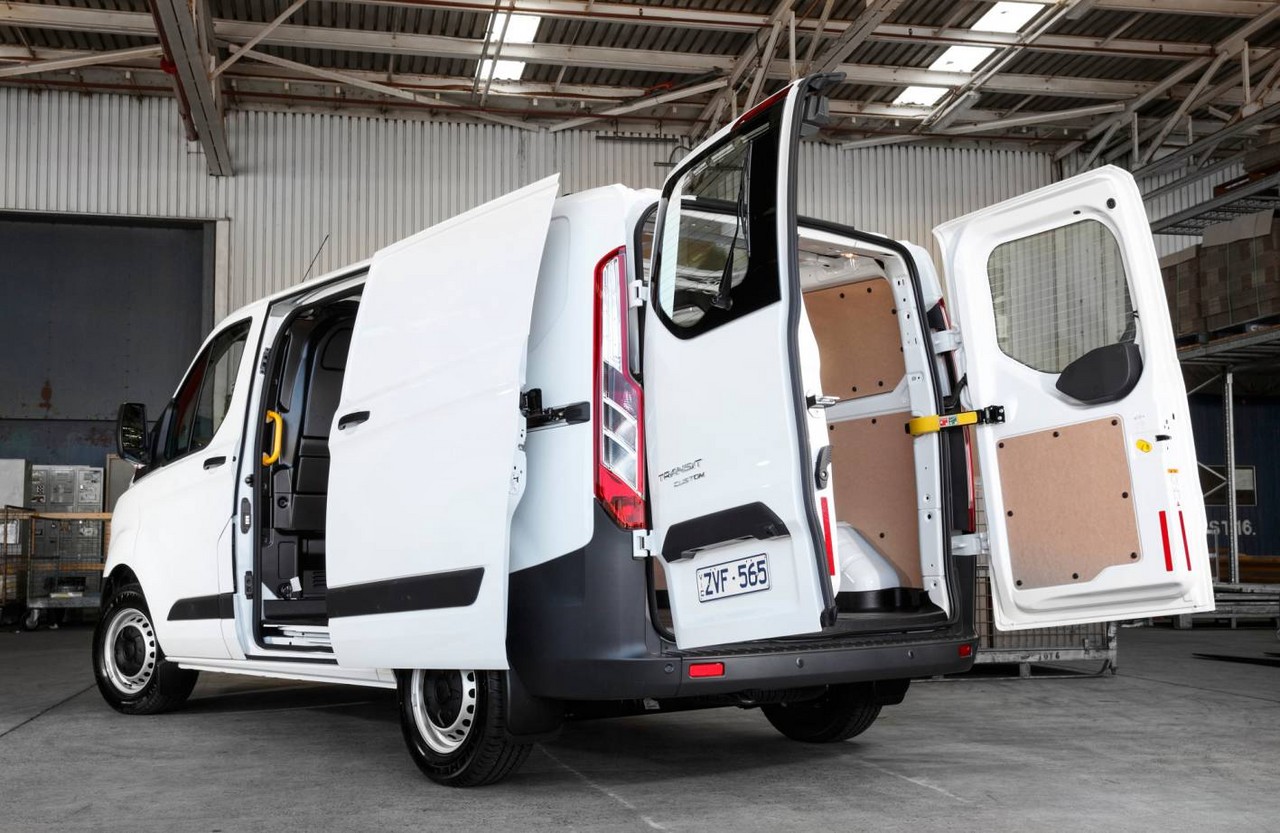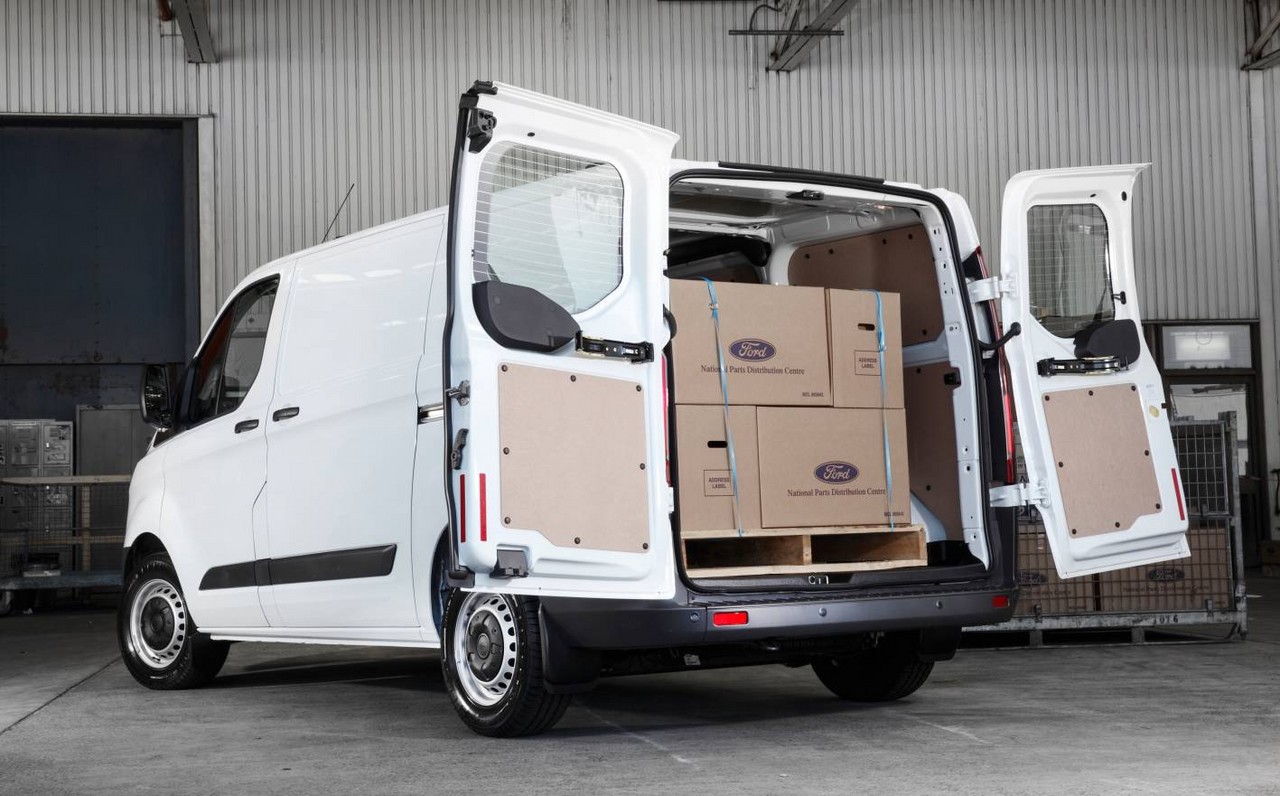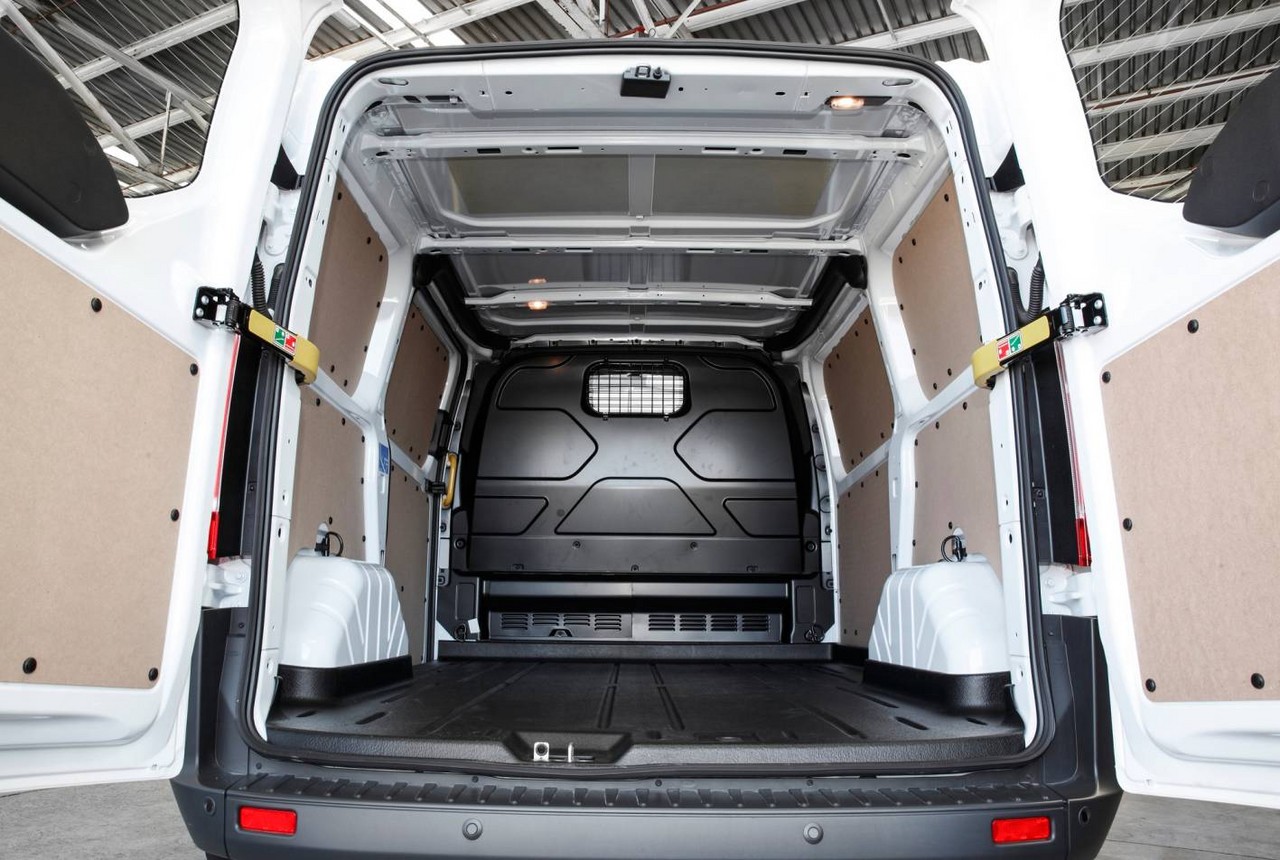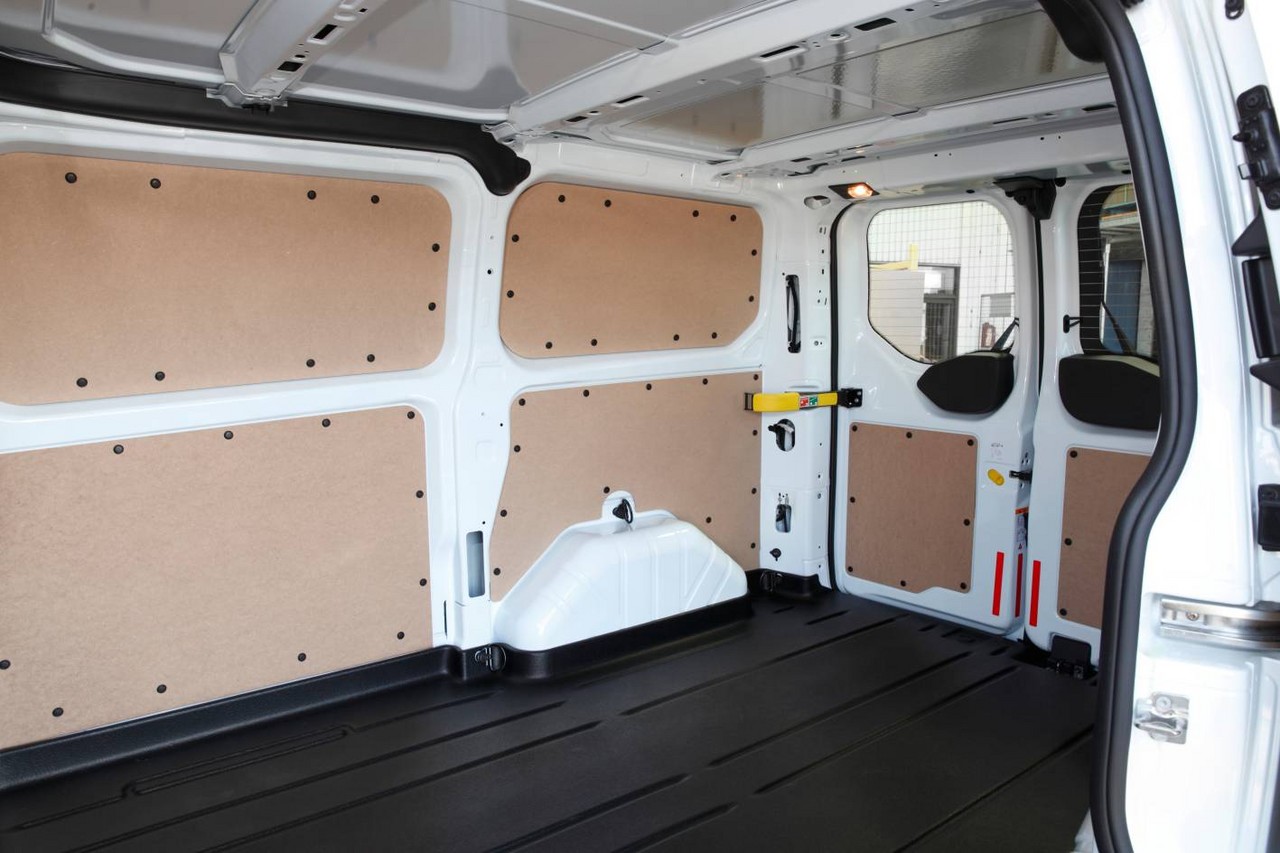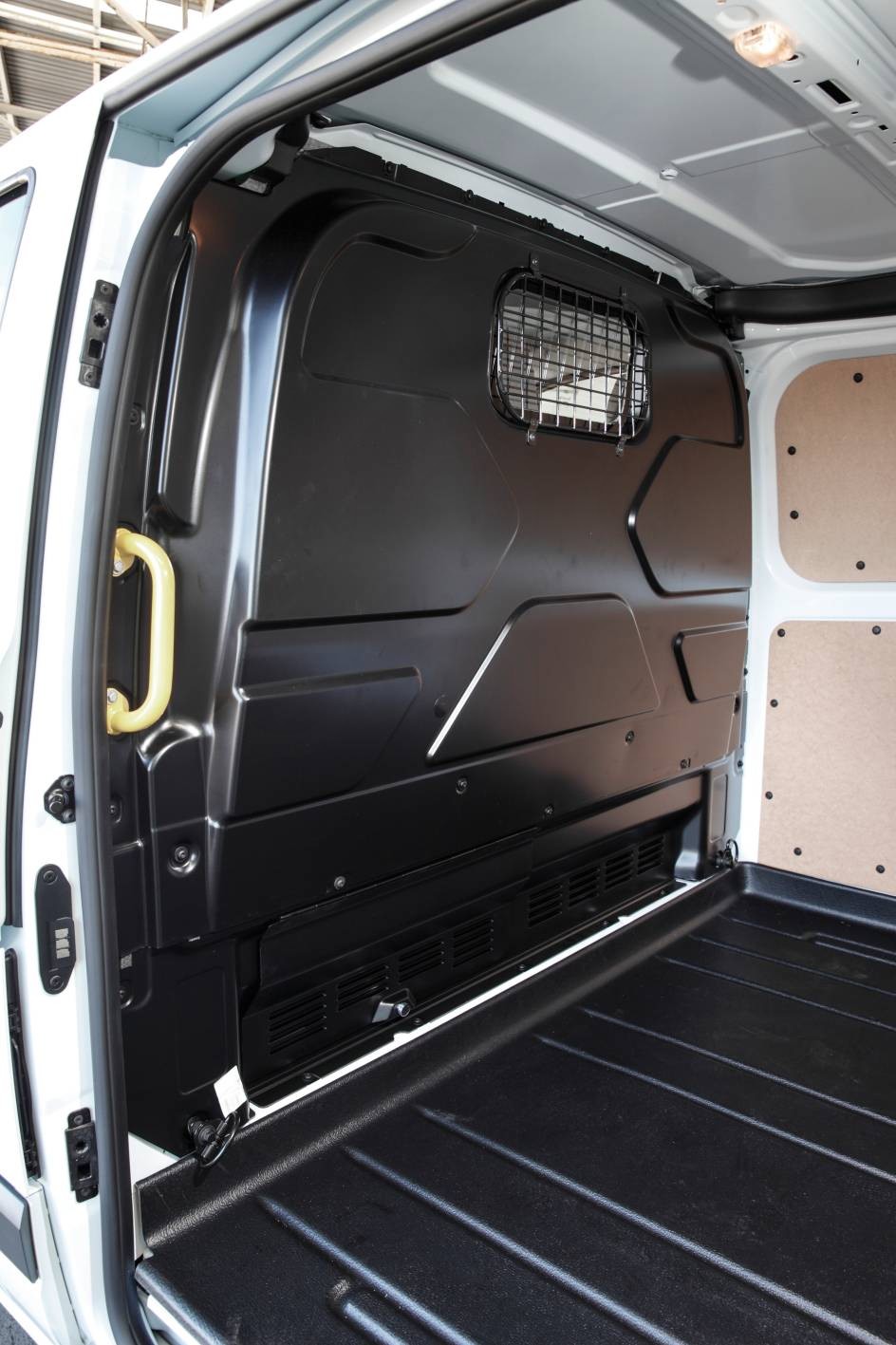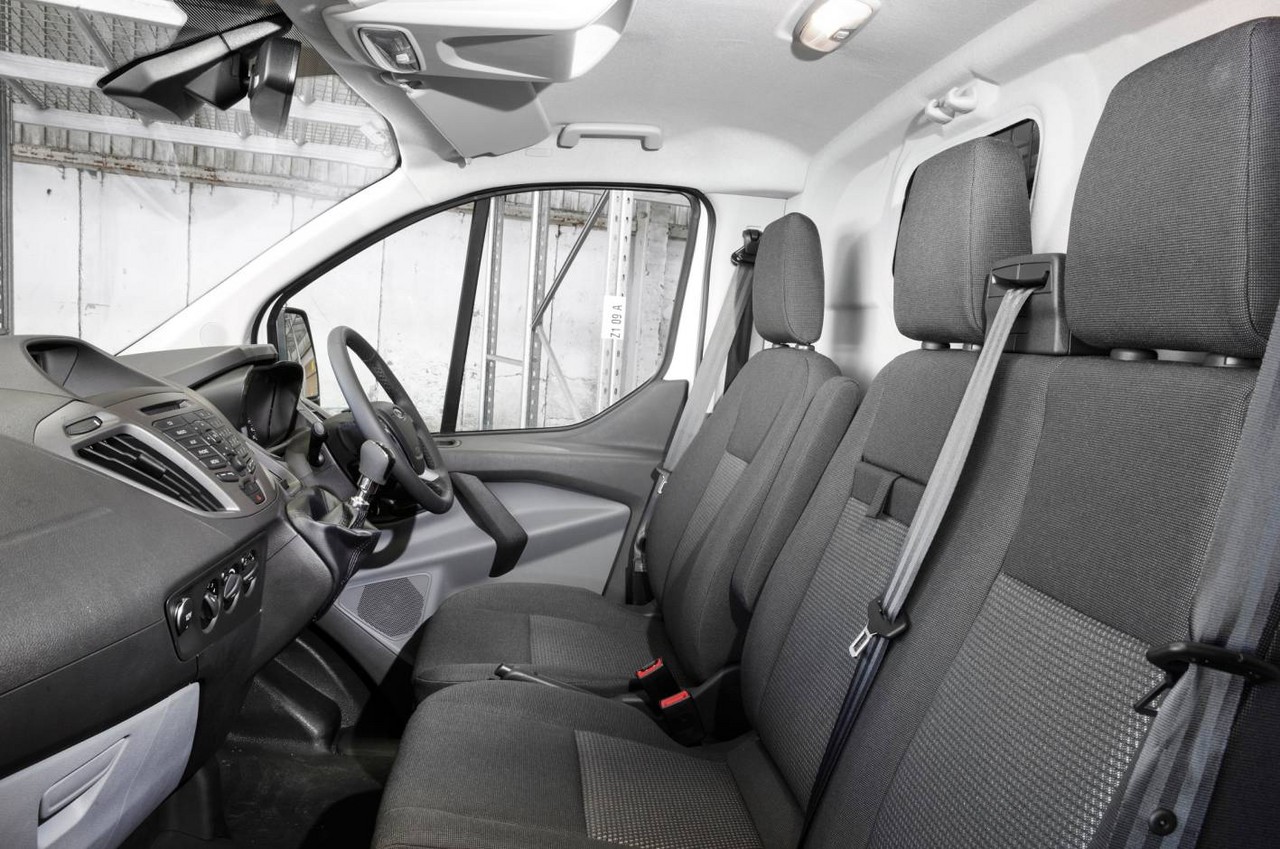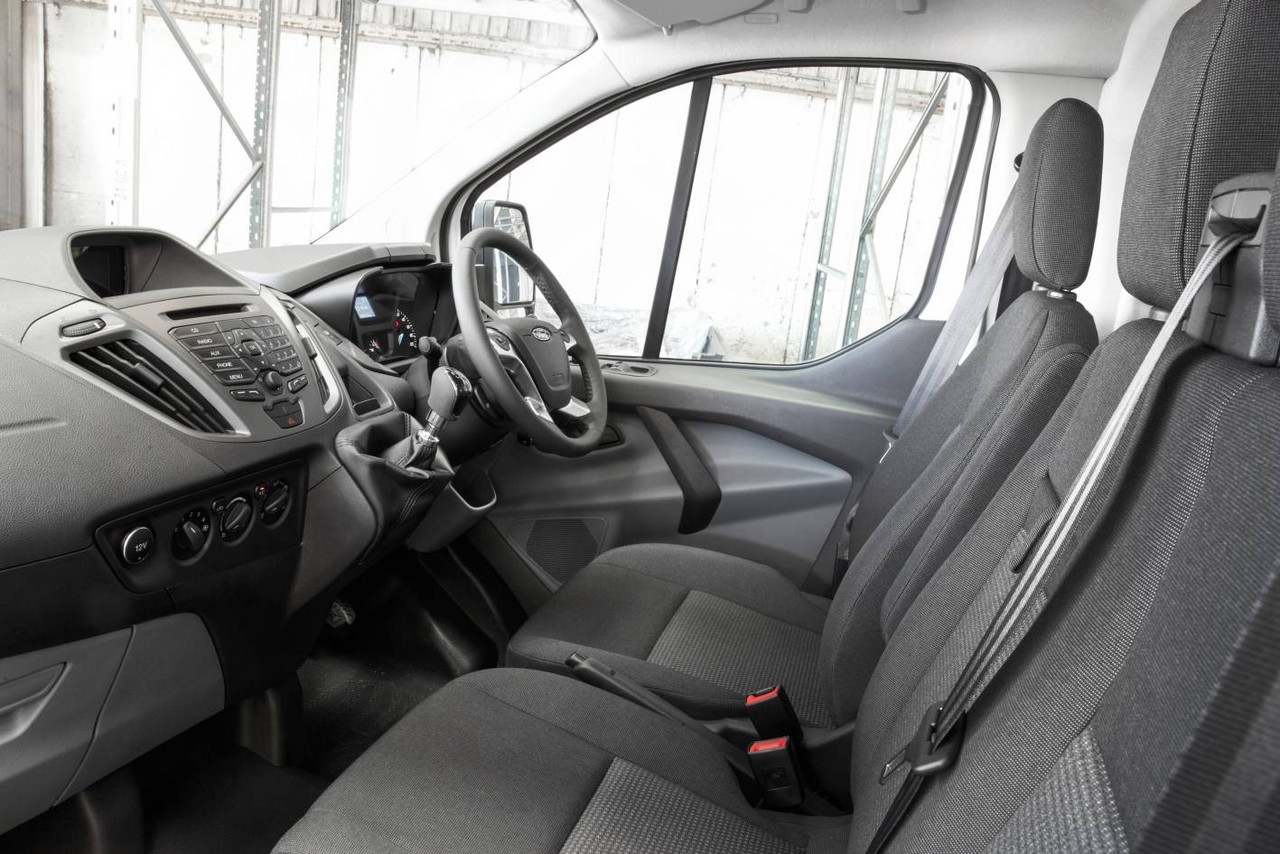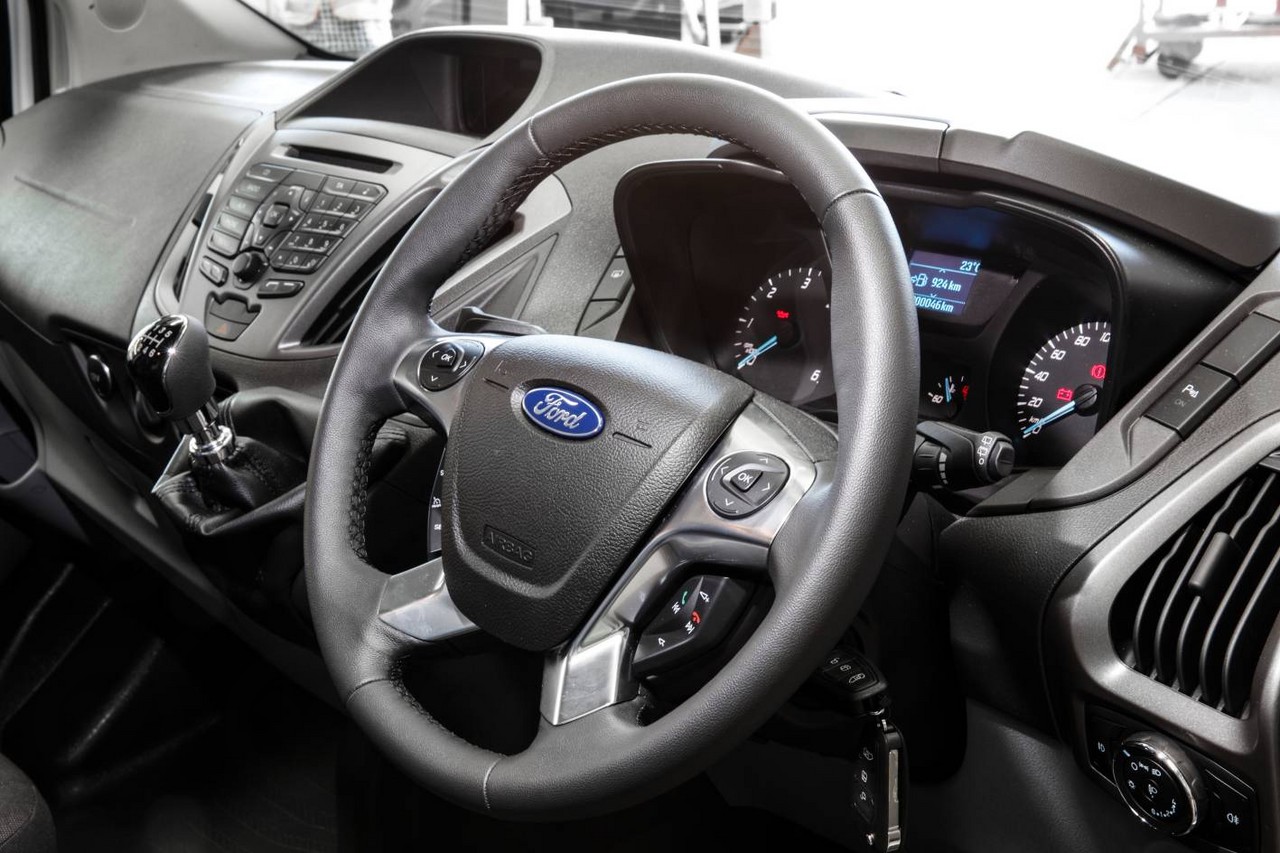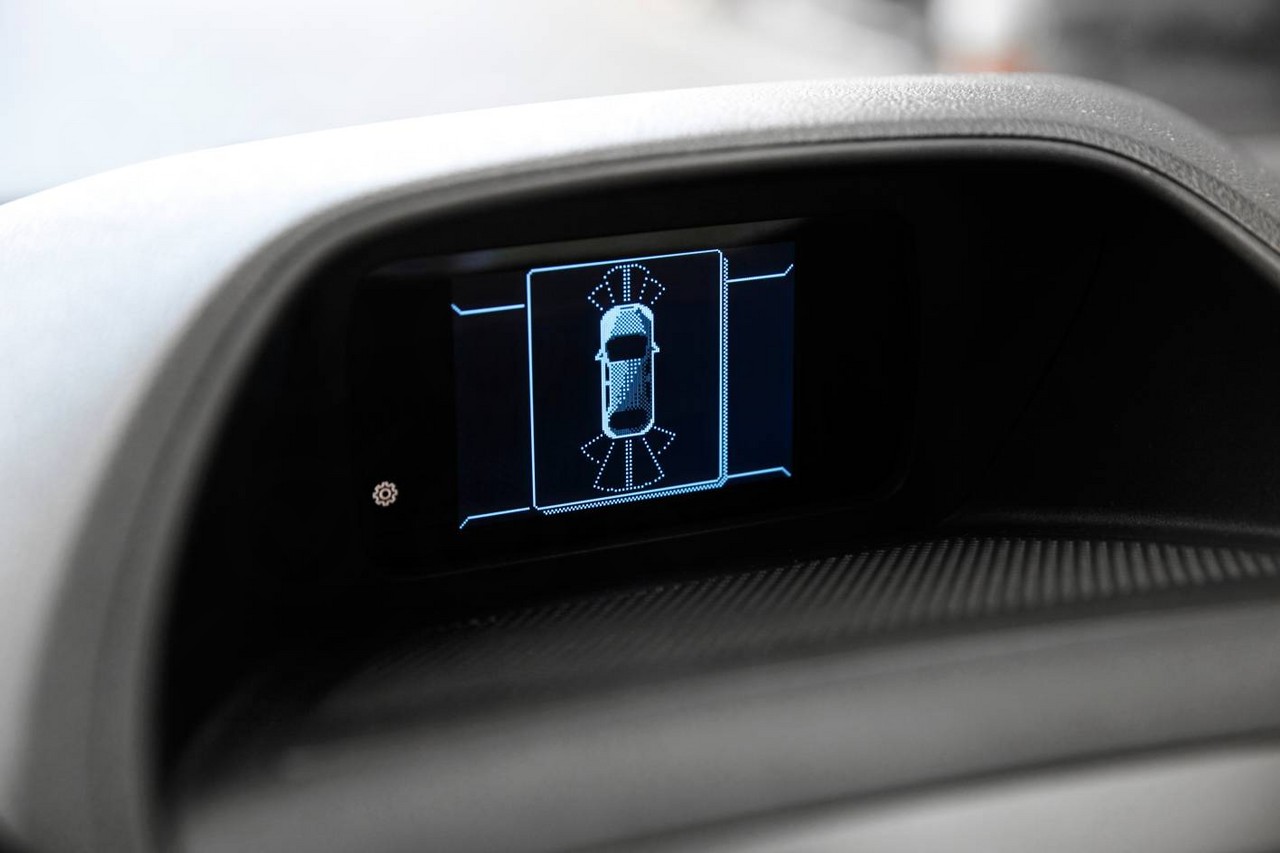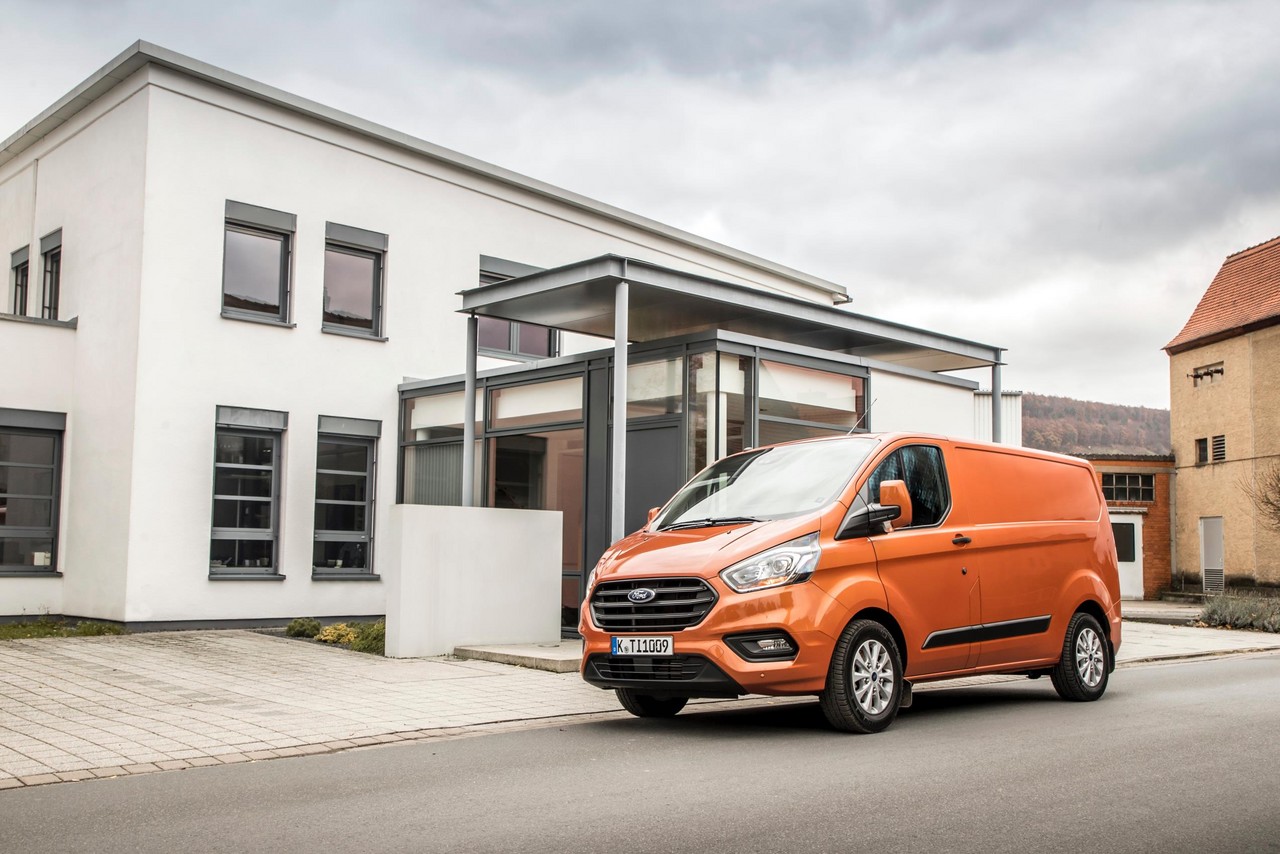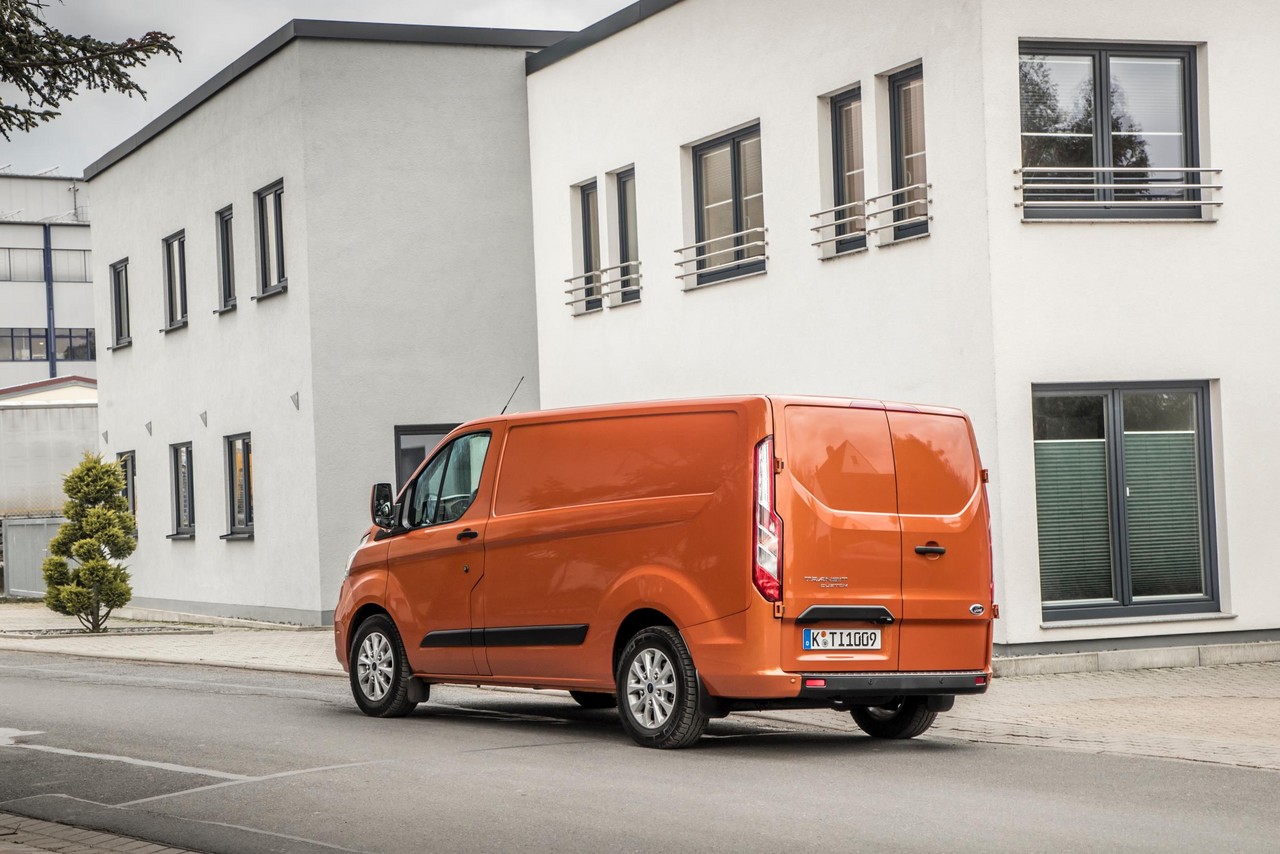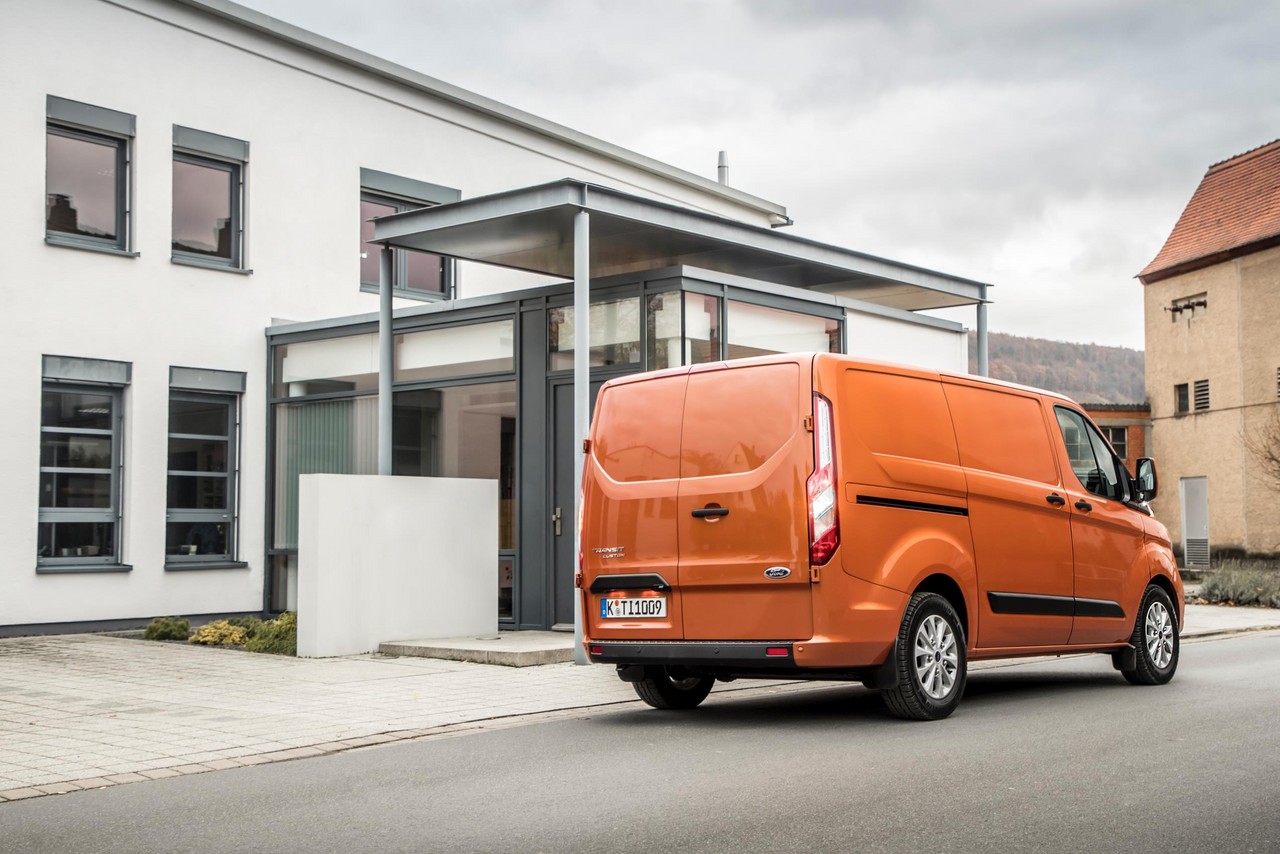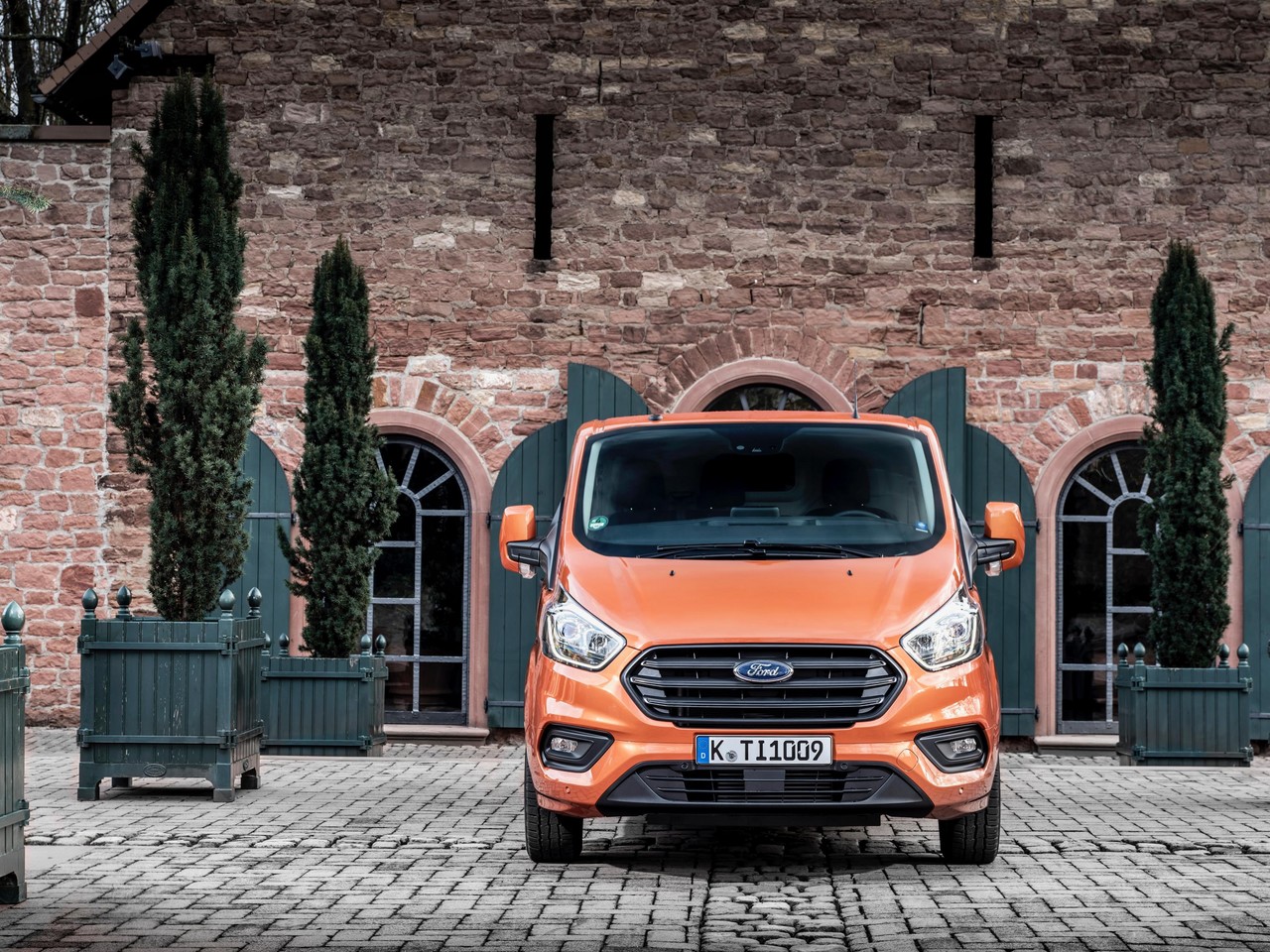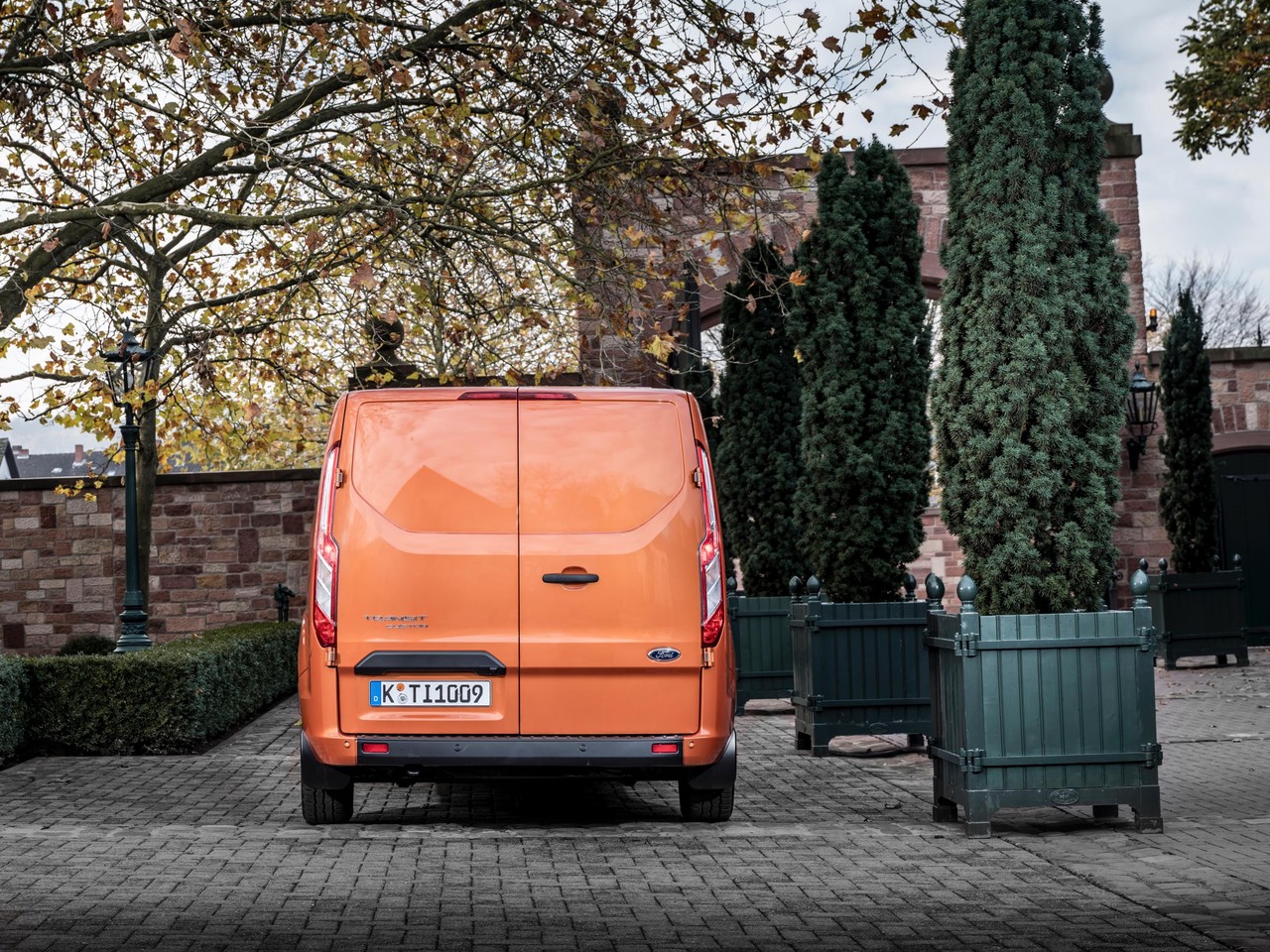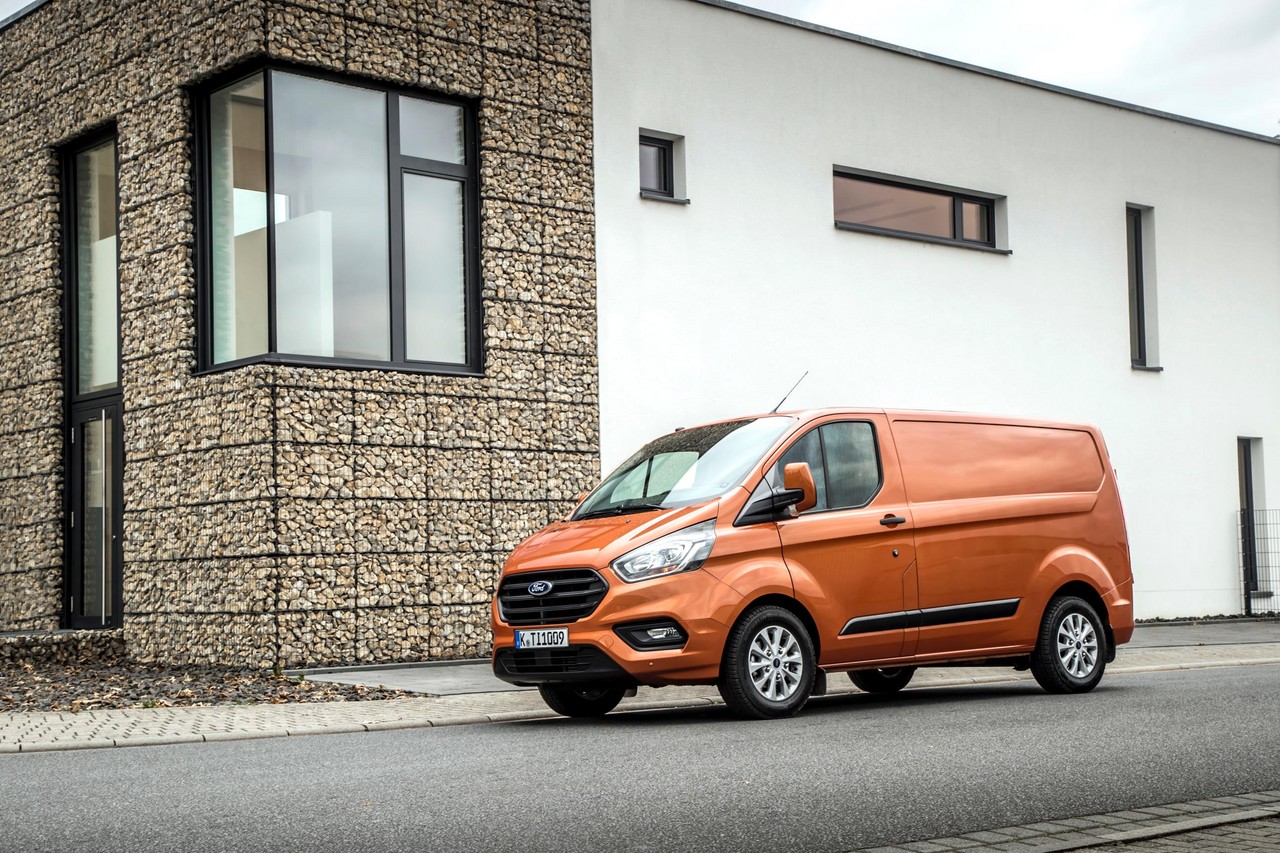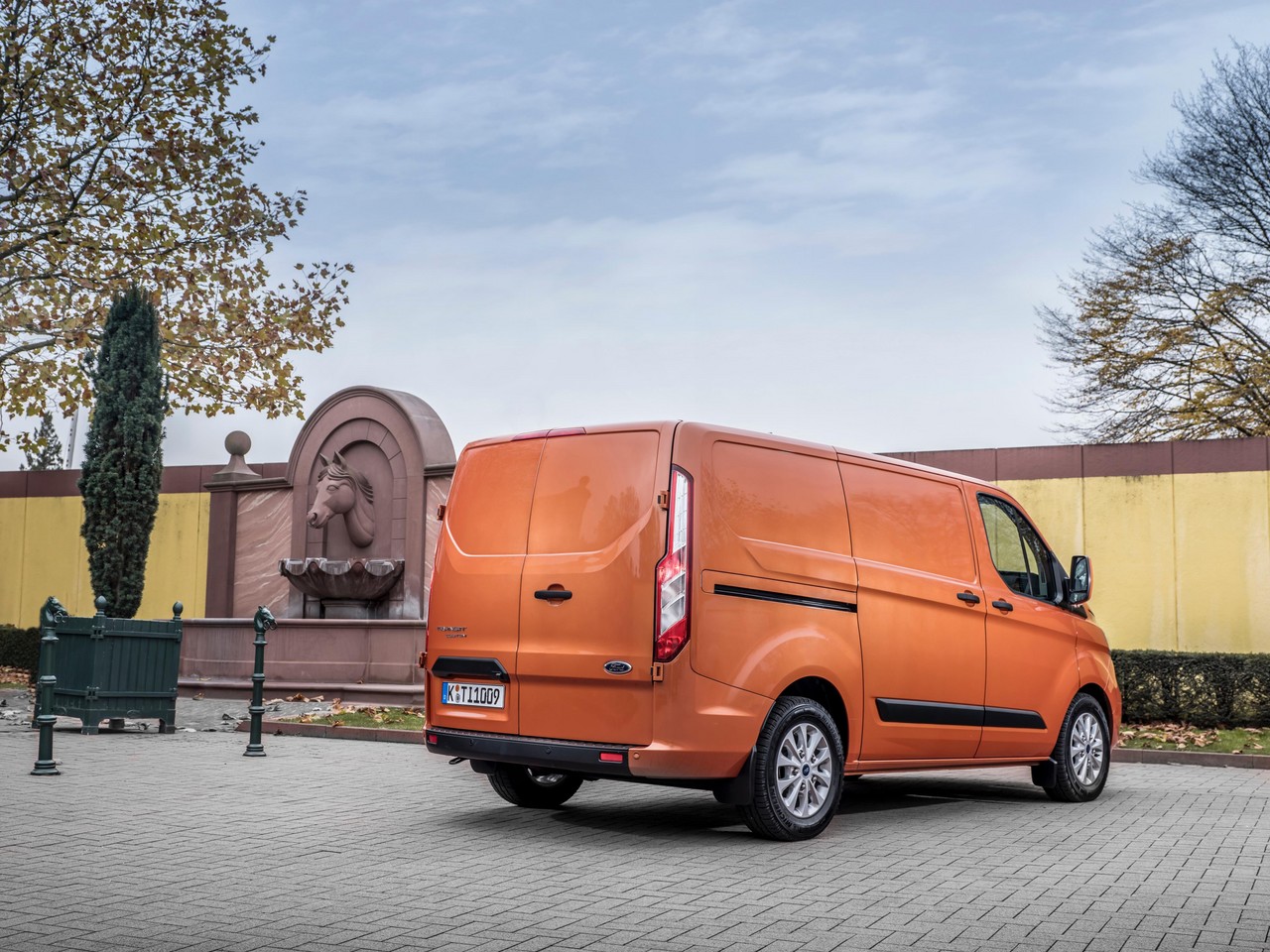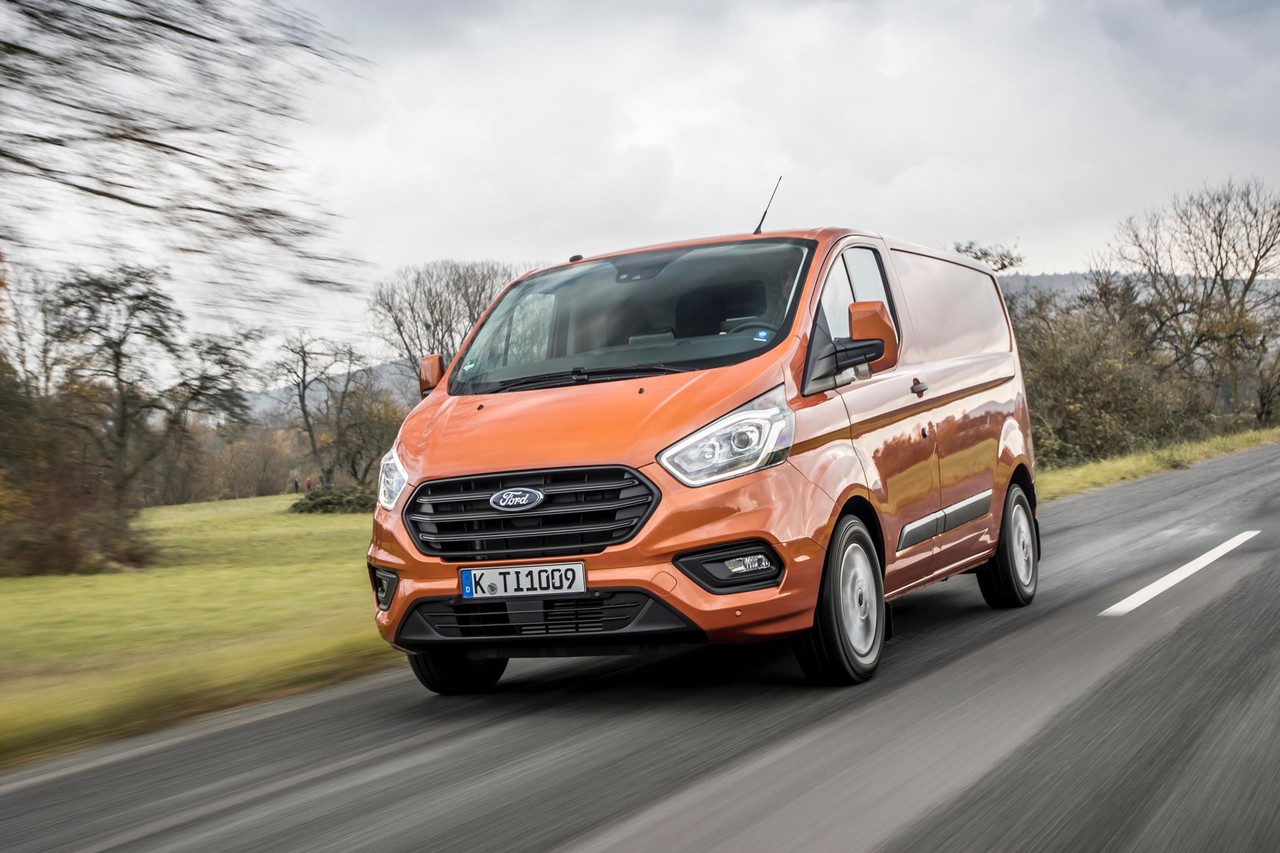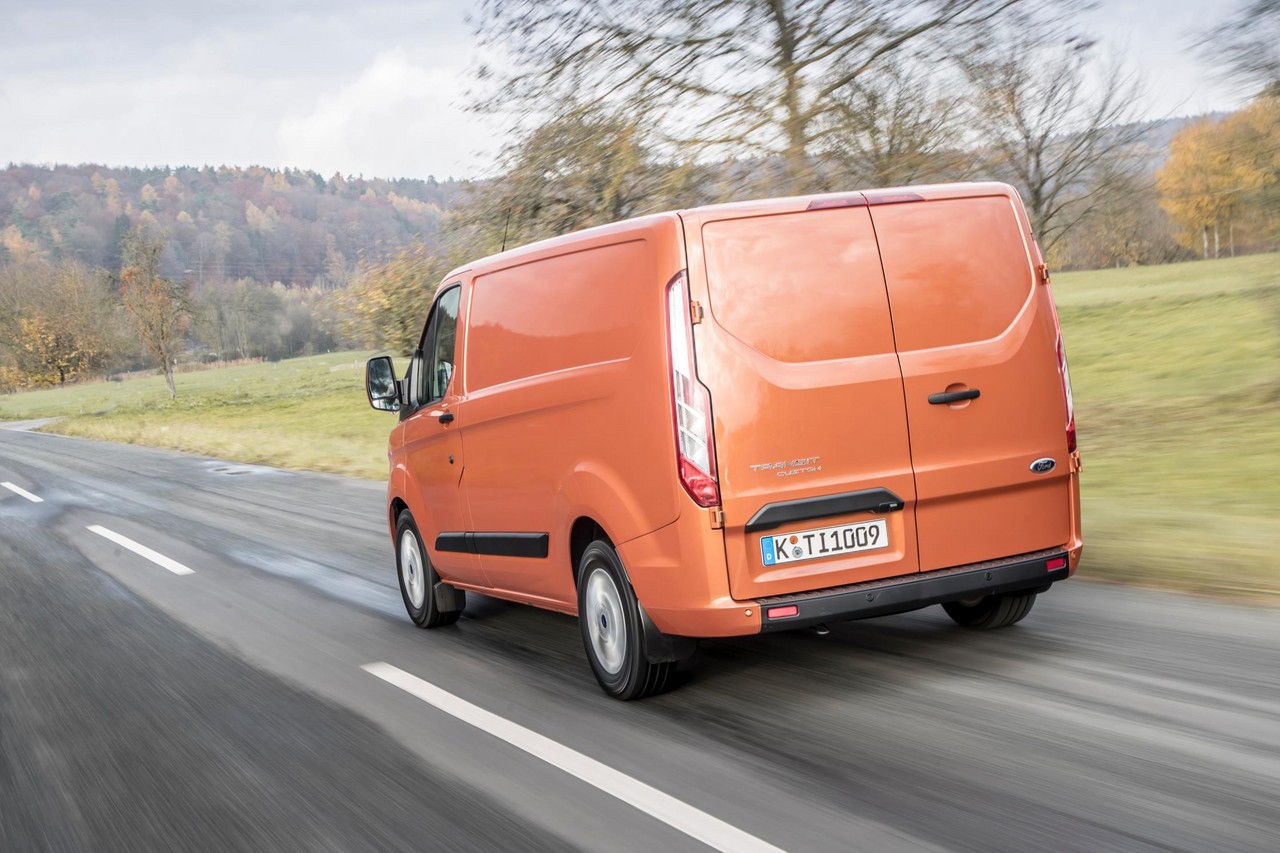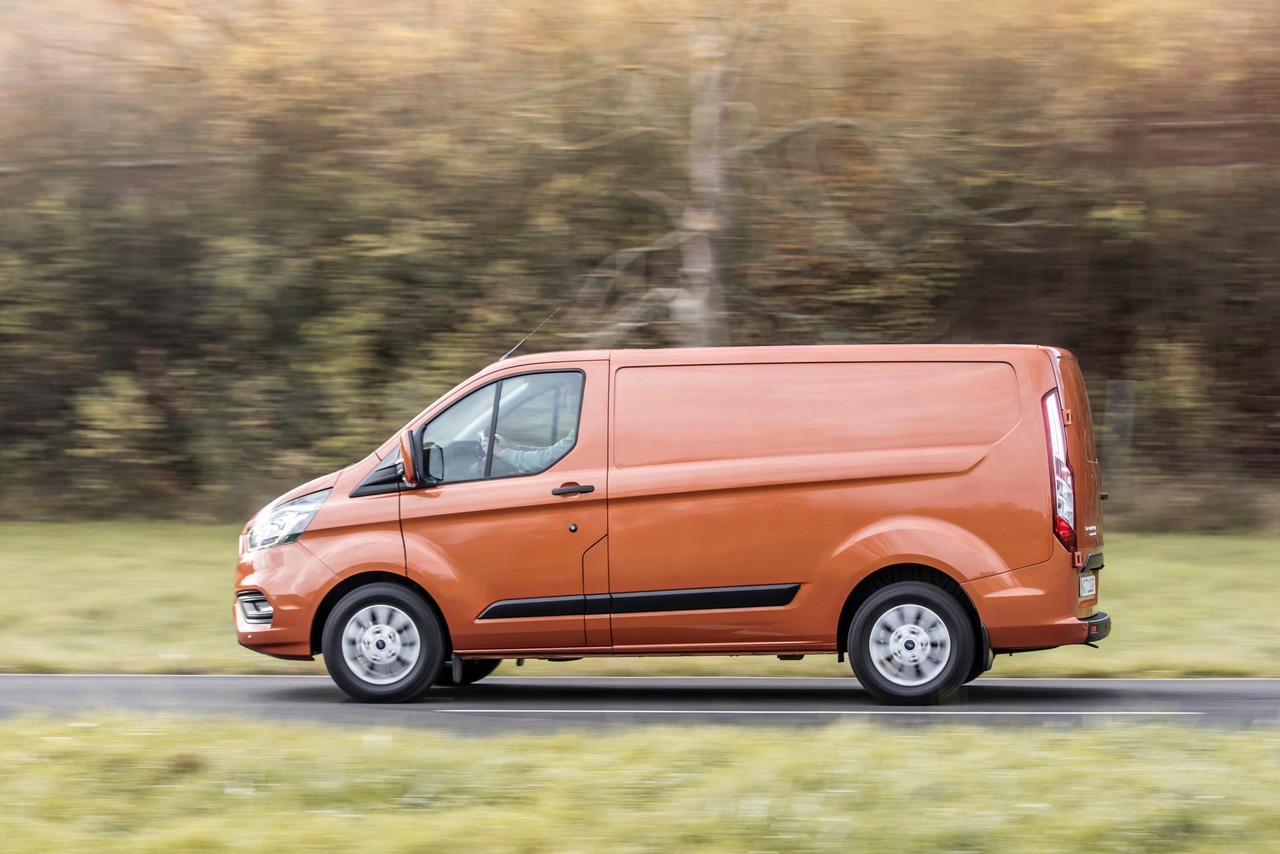
- Frugal 2.2-litre turbo-diesel engine
- Six-speed manual transmission works well
- Comfortable ride and seats
- Quiet, well-insulated cabin
- Five star Euro NCAP safety rating
- Diesel engine sluggish at lower revs and lacks refinement
- No automatic transmission offered
- Additional cost of non-white paint finishes
Review: Ford VN.I Transit Custom (2013-18)
Overview
Released in Australia in September 2013, the Ford VN Transit Custom van range initially consisted of 290S variants with 330L variants following in June 2014. Manufactured in Kocaeli, Turkey, the front-wheel drive Transit Custom was intially powered by a 2.2-litre ‘Duratorq’ turbo-diesel engine which was mated to a six-speed VMT6 manual transmission. Dimensions for the 290S (L1H1) and 330L (L2H1) variants are given in the second table below.
In April 2017, the Ford VN Transit Custom range was revised as the 2.2 TDCi engine was replaced by Ford’s 2.0 EcoBlue engine which was available with six-speed manual and automatic transmissions. To comply with Euro 6 emissions standards, the EcoBlue engine injected AdBlue solution into exhaust gases to convert NOx emissions into nitrogen and water.
2.2 Duratorq TDCi engine
For the Ford Transit Custom 290S and 330L variants, the 2.2-litre Duratorq TDCi diesel engine had a cast iron block, an aluminium cylinder head, a variable nozzle turbocharger with electronically adjustable vane angles, common rail injection operating at 1800 bar with eight-hole Piezo injectors, double overhead camshafts, four valves per cylinder and a compression ratio of 15.5:1.
| Variant | Years | Engine | Trans. | Peak power | Peak torque | |
|---|---|---|---|---|---|---|
| 2.2 TDCi (FWD) |
290S, 330L |
2014-17 | 2.2-litre turbo-diesel I4 | 6sp man. | 92 kW at 3500 rpm | 350 Nm at 1450-2000 rpm |
| 2.0 EcoBlue (FWD) |
290S, 340L |
2017-on | 2.0-litre turbo diesel I4 | 6sp man., 6sp auto |
96 kW at 3500 rpm | 385 Nm at 1500-2000 rpm |
| 290S (L1H1) | 330L (L2H1) | |
|---|---|---|
| Length | 4972 mm | 5339 mm |
| Width | 1986 mm | 1986 mm |
| Height | 1987-2080 mm | 2002-2096 mm |
| Wheelbase | 2933 mm | 3300 mm |
| Load space volume (P m3with Max Vol method) | 5.95 m3 | 6.83 m3 |
| Maximum loadspace length (with bulkhead) | 2555 mm | 2922 mm |
| Maximum loadspace length (with load-through bulkhead) | 3085 mm | 3452 mm |
| Maximum loadspace width | 1775 mm | 1775 mm |
| Loadspace width between wheelarches | 1390 mm | 1390 mm |
| Load height (from floor to roof) | 1406 mm | 1406 mm |
| Side door entry width | 1030 mm | 1030 mm |
| Side load door entry height | 1320 mm | 1320 mm |
| Rear door/tailgate entry width | 1400 mm | 1400 mm |
| Rear door/tailgate entry height | 1340 mm | 1340 mm |
| Loading height | 444-588 mm | 451-581 mm |
| Turning circle | 10.9 m | 12.2 m |
| Gross Vehicle Mass (GVM) | 2900 kg | 3325 kg |
| Kerb weight | 1868 kg | 1965 kg |
| Payload | 1032 kg | 1360 kg |
Body: doors and seats
Initially, the Ford VN Transit Custom had a single sliding door on its left (i.e. passenger) side and 180 degree swinging rear doors. From April 2017, however, the Transit Custom could be specified with dual side load doors. As standard, the Transit Custom was fitted with integrated roof racks which could support loads up to 130 kg and folded flat when not in use.
Inside, the Transit Custom had three seats and a fully glazed steel bulkhead – with a load through hatch – which partitioned the cab from the load area. The interior also featured a storage compartment under the passenger’s seat, a fold-down centre seat back and door stowage bins.
Suspension
The Ford Transit Custom had MacPherson strut front suspension with variable rate springs and leaf spring rear suspension.
Safety equipment
Standard safety equipment for the Ford Transit Custom included dual front airbags, front seat-mounted side (thorax) airbags, curtain airbags, ABS, electronic brake force distribution, brake assist, electronic stability control, traction control and front seatbelts with pretensioners and load limiters.
The Transit Custom was also fitted with:
- Trailer Sway Control: when trailer sway occurred, Trailer Sway Control could reduce engine torque and gradually increase brake pressure on all wheels to reduce the train speed in a stable fashion until the trailer sway stopped. To be activated, the system required a Ford factory fit or Ford accessory tow-bar to be fitted;
- Roll Over Mitigation: a function of the ESC system which prevented the vehicle getting into a roll-over situation;
- Hill Start Assist: assists drivers to accelerate safely on steep inclines;
- Load Adaptive Control: the ESC system would adjust its settings according to the total mass of the vehicle for improved performance; and,
- Torque Vectoring Control: could apply the brakes of the inside front wheel when cornering to transfer torque to the opposing wheel, thereby reducing understeer.
As part of the SYNC connectivity system, the Transit Custom was equipped with Ford’s ‘Emergency Assistance’ system. In the event of an accident which involved activation of the vehicle’s airbags or fuel pump shut off, Emergency Assistance could use a synchronised mobile phone to deliver a voice message directly to 000 operators and keep the line open for hands-free communication.
Euro NCAP testing
In Euro NCAP testing , the Ford Transit Custom received a five star safety rating which included an 84 per cent adult occupant protection rating. In the offset crash test, thigh protection for both front occupants was rated as marginal, while chest protection was rated as adequate. Maximum points were awarded in the side impact; in the more severe pole test, however, chest and abdomen protection were rated as adequate.
Features: Ford Transit Custom
Standard features for the Ford Transit Custom 290S included 15-inch steel wheels with 215/65 R15 tyres (including a full-size spare), a two speaker sound system with digital radio (DAB), a CD player and a USB port, Ford’s ‘SYNC’ in-car connectivity system with a 3.5-inch display, Bluetooth mobile phone connectivity and voice recognition, air conditioning, cruise control with speed limiter, a leather-wrapped steering wheel with audio controls, remote central locking, power windows and heated mirrors), tilt and telescopic steering wheel adjustment, two 12 volt power socket in the cabin, a single 12 volt power socket in the load area, a trip computer and an immobiliser.
The Transit Custom 330L variant was further equipped with 16-inch steel wheels with 215/65 R16 tyres.
An optional ‘City Pack’ included front fog lamps, front and rear parking sensors, a rear view camera with Trailer Hitch Assist and an electrochromatic mirror with a display for the reversing camera.
April 2017 update
Introduced in April 2017, Ford Transit Custom models with the 2.0 EcoBlue engines were fitted with an upgraded 4.0-inch TFT colour screen rather than the 3.4-inch LCD dot matrix screen of the 2.2 TDCi models.
Brochure
- Brochure: Ford VN Transit Custom (February 2014)
- Brochure: Ford VN Transit Custom (August 2016)
- Brochure: Ford VO Transit and VN Transit Custom (April 2017)
Review: Ford VN.II Transit Custom (2018-on)
Overview
The Ford VN Series II (VN.II or ‘2018.5MY’) Transit Custom was released in Australia in June 2018. The Ford VN.II Transit Custom range consisted of 300S and 340L variants, with both available with a high roof option; factory-fitted windows could also be specified on single and dual side load door bodies.
Visually, the Ford VN.II Transit Custom could be identified by its updated styling which included a high-mounted trapezoidal grille, slim headlamps, front fog lamps and daytime running lights (DRLs). Inside, the VN.II Transit Custom had a new instrument panel, an eight-inch full-colour touchscreen (for Ford’s ‘SYNC 3’ connectivity system), additional storage spaces, re-shaped seats with new fabrics and new trim materials.
September 2019: revised range
In September 2019, the Ford VN.II Transit Custom range was revised as more powerful and less polluting engines were introduced to comply with Euro 6.2 emissions standards; standard safety equipment was also extended. For the revised range:
- The 300S was renamed 340S to reflect its greater 3400 kg Gross Vehicle Mass (GVM);
- Double Cab-in-Van (DCiV) variants were introduced in 340L and 320L Sport variants. These DCiV variants had a standard rear bulkhead, second-row seating that was accessed by the dual side load doors and 4.4 cubic metres of load space. While the 340L DCiV had six seats (three in the front row and three in the second row), the 320L Sport DCiV had two separate front seats; and,
- Transit Custom Sport variants were introduced (320S Sport and 320L Sport DCiV) which could be identified by their 17-inch black machined alloy wheels, gloss black grille, racing stripes, decals, unique bumpers, side skirts and body-coloured door mirrors.
| Variant | Years | Engine | Trans. | Peak power | Peak torque |
|---|---|---|---|---|---|
| 300S, 340L |
2018-19 | 2.0-litre turbo diesel I4 | 6sp man., 6sp auto |
96 kW at 3500 rpm | 385 Nm at 1500-2000 rpm |
| 340S, 340L, 340L DCiV |
2019-on | 2.0-litre turbo diesel I4 | 6sp man., 6sp auto |
125 kW | 390 Nm |
| 320S Sport, 320L Sport DCiV |
2019-on | 2.0-litre turbo diesel I4 | 6sp auto | 136 kW | 405 Nm |
Safety equipment and Technology Pack
Available as a $1600 extra-cost option, the ‘Technology Pack’ for the VN.II Transit Custom included the following safety technologies –
- Autonomous Emergency Braking with Pedestrian Detection: could monitor the distance to vehicles and pedestrians in front of the Transit Custom and alert the driver if the distance decreased such that there was a collision risk. If the driver failed to respond, the autonomous emergency braking would be initiated to reduce vehicle speed;
- Adaptive Cruise Control: a radar-based cruise control system which could maintain a pre-set distance from the vehicle ahead. If the system detected that the vehicle ahead was decelerating or too close, it would reduce vehicle speed to maintain the distance. Once the road was clear, the system would then accelerate the vehicle back to the desired cruising speed;
- Lane Departure Warning with Driver Alert: used a forward facing camera to monitor the Transit Custom’s position relative to lane markings. If the vehicle crossed lane markings without the driver having previously applied the turn indicators, the steering wheel would vibrate to alert the driver;
- Blind Spot Information System (BLIS): used radar sensors to detect vehicles approaching from behind and in the driver’s blind spot. If detected, an icon would illuminate in the door mirror on the side of the Transit Custom where the vehicle was detected; and,
- Rear Cross Traffic Alert (RCTA): activated when the driver selected reverse gear, RCTA could detect approaching vehicles that may cross the driver’s intended path as they were reversing out of a driveway or parking space.
The Technology Pack also included Automatic High Beam Control, dusk-sensing headlights, rain-sensing wipers, a Tyre Pressure Monitoring System (TPMS), a 4.2-inch colour cluster screen, a heated windshield and Ford’s ‘MyKey’ which enabled vehicle settings to be set for specific users, such as speed limit reminders and audio volume limits; these settings would then be applied when the key was used.
From September 2019, however, the Technology Pack was fitted as standard for Australian-delivered Ford Transit Custom vehicles.
Features: Ford Transit Custom
As standard, the Ford VN.II Transit Custom was equipped with Ford’s ‘SYNC 3’ connectivity system which included an eight-inch colour touchscreen and smartphone integration (Apple CarPlay and Android Auto). Beyond this, standard features were also extended to include fog lamps, daytime running lamps, a reverse camera and parking sensors (front and rear parking).
Features: Ford Transit Custom Sport
Available in 320S Sport and 320L Sport DCiV variants from September 2019, the Transit Custom Sport featured a ten-way power adjustable driver’s seat, partial leather seat trim, directional bi-xenon headlights, daytime running lights, gloss black interior finishes, chrome vent surrounds and LED lighting for the rear load area.
As noted above, the Transit Custom Sport variants could be identified by their 17-inch black machined alloy wheels, gloss black grille, racing stripes, decals, unique bumpers, side skirts and body-coloured door mirrors. Furthermore, the Transit Custom Sport was available in Blue Metallic and Orange Glow paint finishes.
Brochure
